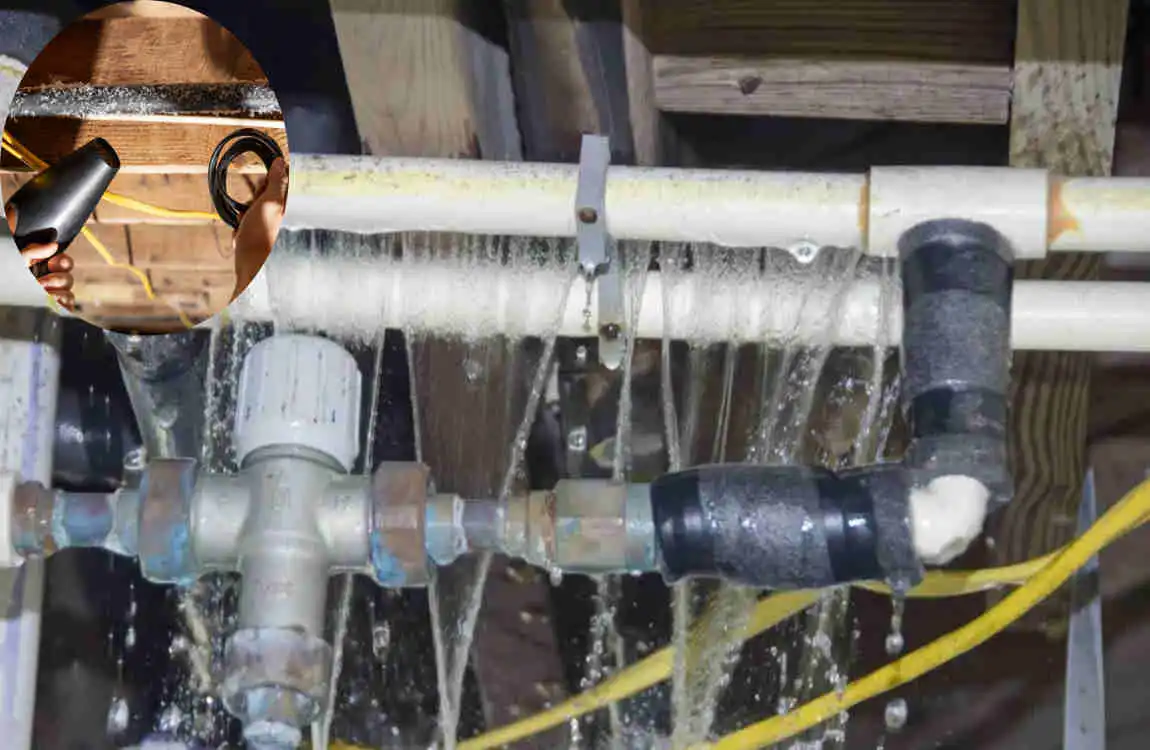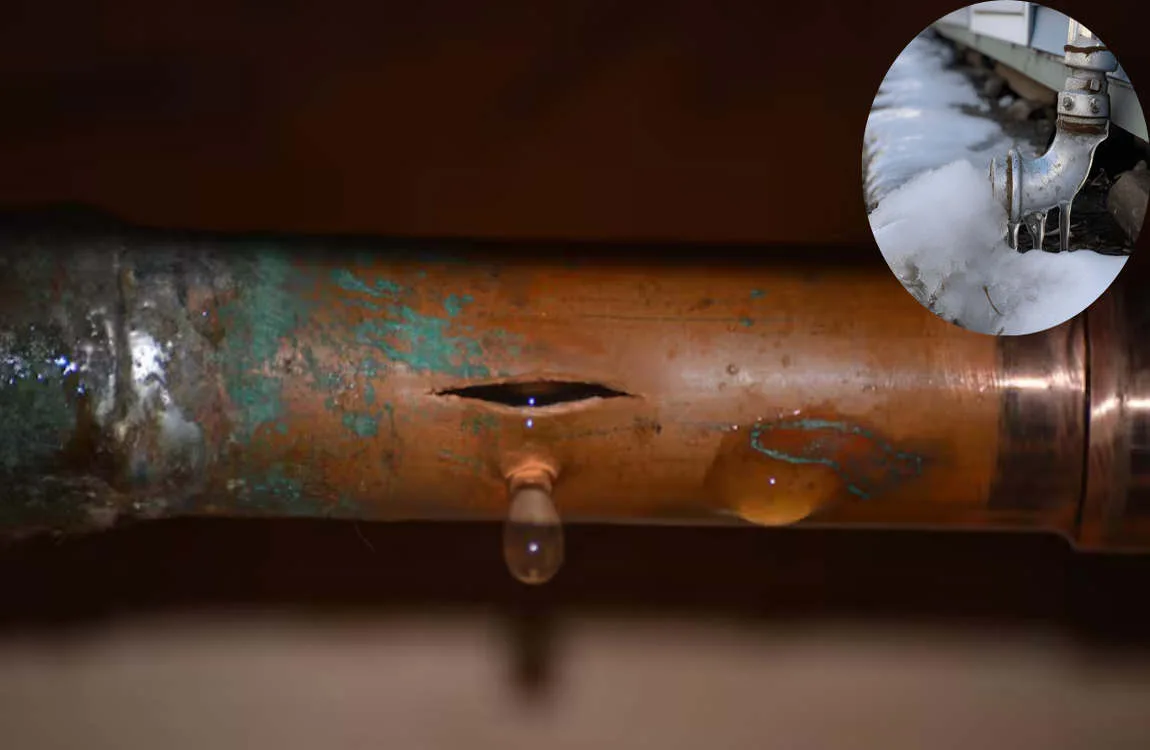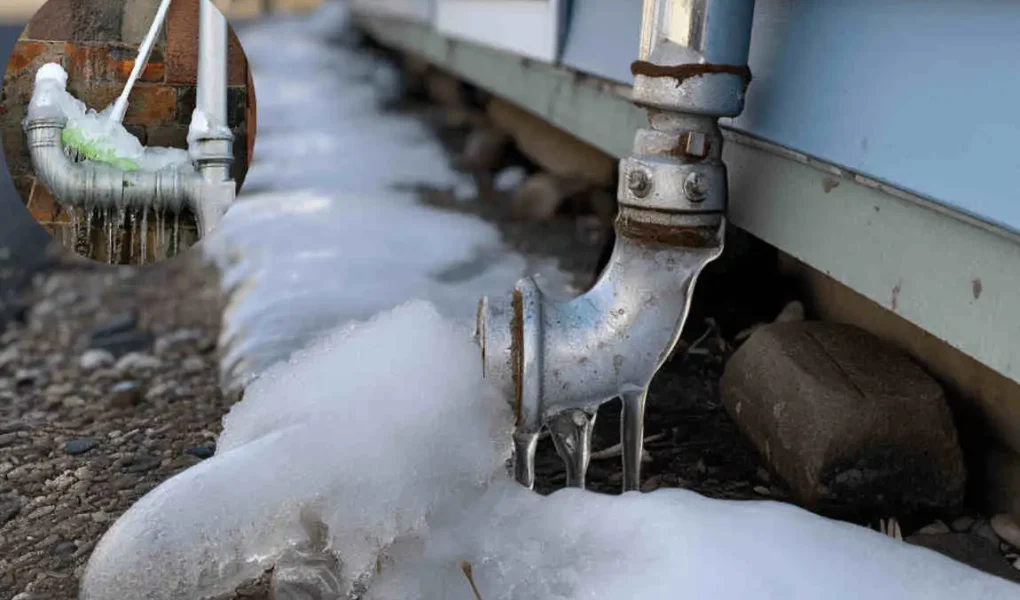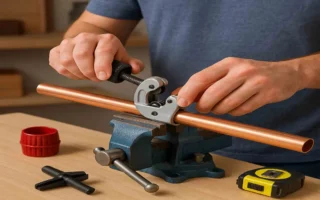Protecting a mobile home from pipe freezing is crucial, as these homes are particularly vulnerable due to their structural design. Pipes are often located underneath the unit, exposed to cold air and damp ground, and the skirting around the home usually offers limited insulation. When pipes freeze, they can burst, causing costly water damage and repairs. Taking proactive steps, such as proper skirting maintenance, insulating pipes, using heat tape, and regular checks, can help prevent freezing and effectively safeguard a mobile home’s water lines.
Understanding how pipes freeze and the potential damage they can cause

Understanding how pipes freeze starts with temperature. When temperatures dip to 32°F and below, water inside the pipes can begin to freeze. This is particularly concerning in mobile homes, where plumbing may be more exposed.
As water freezes, it expands. This expansion creates pressure within the pipe walls, often leading to cracks or bursts. A tiny crack can release a shocking amount of water—up to 250 gallons per day.
Beyond immediate leaks, frozen pipes can lead to extensive damage. Walls may become soaked, insulation compromised, and electrical systems at risk due to excess moisture.
The aftermath is not just inconvenient; repairs could cost thousands of dollars and take weeks if not months for complete restoration. Protecting your mobile home from freezing temperatures means safeguarding both your living space and finances while ensuring peace of mind during the winter months.
Signs of Frozen Pipes in a Mobile Home
Detecting frozen pipes early can save you from extensive damage. One of the first signs is reduced water flow. If your taps suddenly deliver a weak trickle, it’s time to investigate.
Another telltale sign is unusual sounds. Listen for clanking or gurgling noises coming from your plumbing system when turning on faucets. These could indicate that ice has formed inside the pipes.
Check for cold spots along your walls or floors as well. If certain areas feel significantly chillier than others, there might be freezing occurring within those sections.
Inspect exposed pipes in unheated areas, like under sinks or in crawl spaces. Ice may form visibly on these surfaces during frigid temperatures, signaling potential trouble ahead. Being vigilant about these signs can help you take action before serious issues arise.
Tips for Preventing Frozen Pipes

One of the simplest ways to prevent frozen pipes is to insulate them. Use foam pipe insulation or even old towels to wrap exposed areas, especially in unheated spaces.
Keep your home warm during cold spells. Set your thermostat no lower than 55 degrees Fahrenheit. A stable temperature helps protect vulnerable plumbing.
You may also read (can homeowners legally pull their own plumbing permits).
Let faucets drip slightly during extreme temperatures. This keeps water moving and reduces pressure buildup inside pipes, which could lead to freezing.
Seal any gaps around windows and doors with caulk or weatherstripping. Cold drafts can chill nearby pipes quickly, increasing the risk of freezing.
Consider keeping cabinet doors open under sinks when temperatures plummet. This allows warm air from your home to circulate through the plumbing, further reducing the chances of freeze damage.
Steps to Thaw Frozen Pipes
If you suspect that your pipes are frozen, it’s essential to act quickly. Start by turning off the water supply to prevent any further damage if a pipe bursts.
Next, apply heat directly to the affected area. You can use a hairdryer or heating pad for this purpose. Make sure not to use an open flame, as it poses a significant fire risk.
As you warm the pipes, keep faucets open. This allows melted water to flow through and helps relieve pressure in the system.
Also, move from section to section when thawing; start at the faucet and work backwards toward the frozen area. Monitor closely and be patient—rushing may lead to cracks or bursts.
If these methods aren’t practical after some time, consider calling a professional plumber who has specialized tools for thawing pipes safely without causing additional damage.
Insurance Coverage for Pipe Freezing Damage in Mobile Homes
Insurance coverage for pipe freezing damage can vary significantly depending on your policy. Many standard homeowners’ insurance plans include this type of protection, but it’s crucial to review the specifics of your coverage.
Check if your policy covers water damage resulting from burst pipes or frozen pipes. Some insurers may require preventive measures, such as maintaining a minimum temperature in unoccupied spaces.
It’s also wise to document your home and its plumbing system before winter hits. Take photos and keep receipts for any upgrades made to improve insulation around pipes.
If you find yourself facing a claim due to pipe freeze issues, prompt reporting is essential. Insurers often have time limits for filing claims after an incident occurs, so act quickly when problems arise.
Understanding these nuances can provide peace of mind during chilly months and help safeguard your investment in your mobile home.
You may also read (how to unclog water lines in your home).




